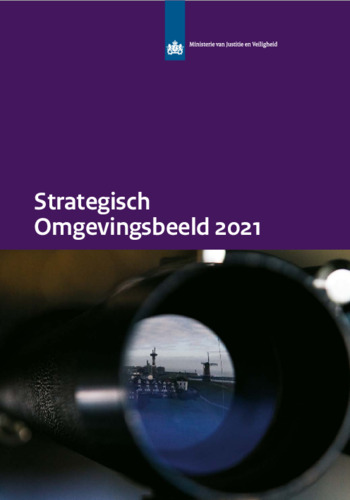- Home >
- Services >
- Access to Knowledge >
- Trend Monitor >
- Source of threat >
- Trend snippet: Technological opportunities and weaknesses in The Netherlands
Trends in Security Information
The HSD Trendmonitor is designed to provide access to relevant content on various subjects in the safety and security domain, to identify relevant developments and to connect knowledge and organisations. The safety and security domain encompasses a vast number of subjects. Four relevant taxonomies (type of threat or opportunity, victim, source of threat and domain of application) have been constructed in order to visualize all of these subjects. The taxonomies and related category descriptions have been carefully composed according to other taxonomies, European and international standards and our own expertise.
In order to identify safety and security related trends, relevant reports and HSD news articles are continuously scanned, analysed and classified by hand according to the four taxonomies. This results in a wide array of observations, which we call ‘Trend Snippets’. Multiple Trend Snippets combined can provide insights into safety and security trends. The size of the circles shows the relative weight of the topic, the filters can be used to further select the most relevant content for you. If you have an addition, question or remark, drop us a line at info@securitydelta.nl.
visible on larger screens only
Please expand your browser window.
Or enjoy this interactive application on your desktop or laptop.
Technological opportunities and weaknesses in The Netherlands
currently under development, such as metaverse and quantum computing, will also find their way into government, business and society.
The pressure on the digital resilience, integrity and autonomy of citizens, businesses and governments is increasing. There is an increasing dependence on digital infrastructure and Big Tech companies. Society is increasingly digitizing and 'networking'. The 'Internet of Things' is an example of this. In addition, there is more distrust of the government about the handling of citizens' data and the so-called surveillance society. Personal data can mistakenly end up with private and public parties. Incidents such as the data theft at the GGD illustrate the risks.
The rapid development of new digital tools also means that opportunities for cyber and digitized crime - such as ransomware, identity fraud and crypto fraud - have increased dramatically. Criminals are using influence tactics and advanced technologies such as social engineering, data analytics and social media analytics. Trading of
digital data is taking place on specialized criminal networks. The dark web, where both digital and physical illegal products and services are offered, and the increasing use of crypto-currencies to pay for these products and services, play an important role in this.




